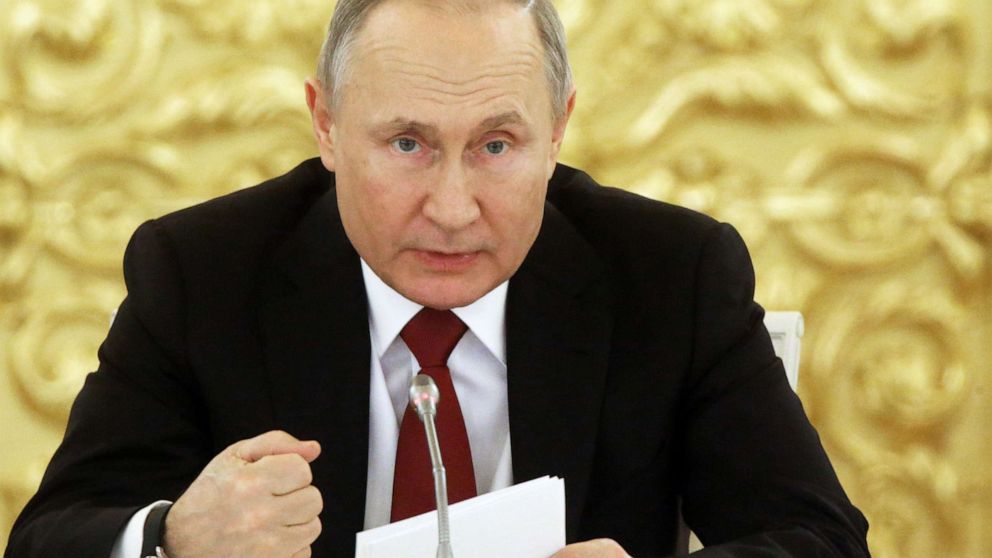Trump's Aerospace Legacy: An Analysis Of Deals And Their Impacts

Table of Contents
Increased Defense Spending and its Effects on the Aerospace Industry
The Trump administration oversaw a significant increase in defense spending, directly impacting the aerospace industry. This budgetary boost fueled growth and innovation within the sector, creating both opportunities and challenges.
Boosting Military Budgets
The increased defense budget resulted in substantial allocations to aerospace-related programs. This translated to:
- Increased funding for fighter jet programs: Significant investments were made in the F-35 Joint Strike Fighter program, among others, leading to increased production and modernization efforts.
- Expansion of missile defense systems: Funding for missile defense systems, including ground-based and space-based components, experienced a notable rise, stimulating development and deployment.
- Growth in space-based assets: Increased investment in satellite technology and space-based surveillance systems bolstered the capabilities of the U.S. military.
This surge in funding directly benefited major aerospace contractors like Boeing, Lockheed Martin, and Northrop Grumman. They experienced increased profits, created numerous jobs, and accelerated research and development efforts across a range of aerospace technologies. This period of growth, however, also raised concerns about potential cost overruns and the long-term sustainability of such high spending levels.
The Creation of the Space Force
A landmark event during the Trump administration was the establishment of the U.S. Space Force as a separate branch of the military. This decision had significant implications for aerospace technology development and its budget.
- Space Force mission: The Space Force was tasked with protecting U.S. assets in space, ensuring freedom of operation, and developing new space-based capabilities.
- Acquisition of new technologies: The new branch rapidly began acquiring new technologies and space-based assets, driving innovation within the aerospace sector and increasing competition.
- Impact on private space companies: The creation of the Space Force fostered both collaboration and competition with private space companies like SpaceX and Blue Origin.
While the Space Force aimed to enhance national security, its creation also sparked debate. Critics questioned its necessity and potential for escalating the arms race in space. The long-term effects of its creation and the overall impact on the aerospace industry will continue to unfold.
Trade Policies and Their Influence on the Aerospace Sector
Trump's trade policies, particularly his trade disputes with China, significantly impacted the aerospace industry.
Trade Wars and Their Impact
The trade war with China led to:
- Supply chain disruptions: Tariffs and trade restrictions created significant disruptions to global supply chains, impacting the availability of aerospace components and materials.
- Tariffs on imported parts: Tariffs imposed on imported aerospace parts increased production costs for American manufacturers, impacting their competitiveness.
- Retaliatory measures: China and other countries implemented retaliatory measures, further complicating the global aerospace trade landscape.
These disruptions affected various sectors within the industry, leading to job losses in some areas and gains in others. The long-term effects of these trade policies on the competitiveness of the U.S. aerospace industry remain to be seen, with some analysts expressing concerns about the potential for reduced global collaboration and innovation.
Negotiating International Deals
While characterized by trade disputes, the Trump administration also engaged in some international aerospace deals. A thorough analysis of these agreements is required to fully understand their benefits and drawbacks. A focus should be given to the specific terms, the geopolitical implications, and the impact on American technological leadership and international partnerships. Further investigation is needed to offer a conclusive assessment of these international collaborations.
NASA and Space Exploration Under Trump
The Trump administration renewed the focus on lunar exploration, significantly impacting NASA's budget and priorities.
Focus on Artemis Program and Lunar Exploration
The Artemis program, aiming to return humans to the Moon and establish a sustainable lunar presence, became a central focus:
- Artemis mission goals: The program aimed to land the first woman and the next man on the Moon, paving the way for future exploration of Mars and beyond.
- Budget allocation: Significant budget allocations were directed towards the Artemis program, driving innovation in rocket technology, life support systems, and other crucial aspects of space exploration.
- Involvement of private companies: The program actively involved private companies such as SpaceX, fostering public-private partnerships and driving cost efficiencies.
The Artemis program's long-term vision promises to reshape the aerospace sector, fostering advancements in various technologies and creating new opportunities for commercial space ventures.
Relationship with Private Space Companies
The Trump administration fostered a closer relationship with private space companies like SpaceX and Blue Origin.
- Government contracts: NASA awarded substantial contracts to private companies for developing launch systems, spacecraft, and other technologies.
- Public-private partnerships: The emphasis on public-private partnerships accelerated innovation and helped reduce the financial burden on NASA.
This reliance on private companies raises questions about the balance between government oversight and commercial interests in space exploration. The long-term implications of this approach, and its impact on the competitive landscape of the aerospace industry, are yet to be fully determined.
Conclusion
This analysis of Trump's aerospace legacy reveals a period of significant change and investment. Increased defense spending spurred growth, while the Space Force signaled a renewed focus on national security. However, trade disputes presented challenges, highlighting the interconnected nature of global supply chains. The emphasis on Artemis and private companies represents a potential shift towards a more commercially driven space exploration model. Understanding the complexities of these deals and their impacts is crucial for navigating the future of the American aerospace industry. Further research into the long-term effects of these policies and contracts is necessary to fully grasp Trump's lasting influence on Trump's aerospace legacy.

Featured Posts
-
 Muere Juan Aguilera Adios A La Leyenda Del Tenis Espanol
May 19, 2025
Muere Juan Aguilera Adios A La Leyenda Del Tenis Espanol
May 19, 2025 -
 Erling Haaland And Man City Mascot Incident Police Statement Expected
May 19, 2025
Erling Haaland And Man City Mascot Incident Police Statement Expected
May 19, 2025 -
 East Hampton Police Officer Arrested Dwi Charges Filed By Southampton Police
May 19, 2025
East Hampton Police Officer Arrested Dwi Charges Filed By Southampton Police
May 19, 2025 -
 Cooke Maroney And Jennifer Lawrence Couple Seen Publicly After Second Child Reports
May 19, 2025
Cooke Maroney And Jennifer Lawrence Couple Seen Publicly After Second Child Reports
May 19, 2025 -
 The Eus Tightening Grip A Growing Exodus Of Europeans
May 19, 2025
The Eus Tightening Grip A Growing Exodus Of Europeans
May 19, 2025
